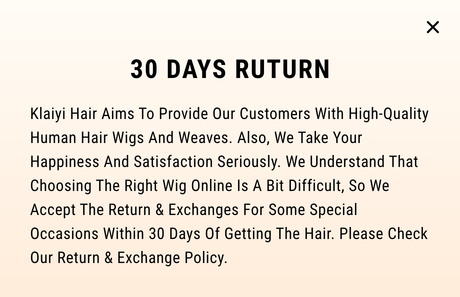Join The Forum To Get inspired Ideas
The Ultimate Guide to Braids: Styles, Origins, and Hair Care Tips
Braids are more than just a hairstyle—they are a symbol of culture, creativity, and self-expression. From the timeless Fulani braids to trendy Jayda Wayda braids, this protective style continues to evolve while honoring deep historical roots.
In this guide, we’ll explore where braids originated, today’s most popular braid styles, and essential care tips to keep your look fresh and healthy.
1.Where did braids originate?
Source:Pinterest
Braiding hair dates back thousands of years, with origins traced to ancient African civilizations. Archaeologists have found braids depicted in stone carvings and hieroglyphs over 5,000 years old. In African societies, braids represented more than beauty—they symbolized identity, age, marital status, and tribe.
Different patterns and techniques were passed down through generations, turning hair into an art form and a social connector. As the African diaspora spread, so did the tradition of braiding—blending with Caribbean, European, and American influences to create the endless braid variations we see today.
2.Trending Braid Styles for You To Know
From sleek lemonade braids to artistic dragon braids, there’s a braid style for every mood, season, and occasion. Let’s explore the most popular ones trending right now.
Source:Curlygirlswag
1. Lemonade Braids
Inspired by Beyoncé’s iconic Lemonade album, these side-swept cornrows are bold, sleek, and feminine. Lemonade braids are perfect for showing off facial features and can be styled in various lengths and thicknesses.
Source:Hairstylesfeed
2. Fishing Braided Styles
Fishing braids—thin, precise, and tightly woven—resemble the pattern of fishing lines. They’re ideal for anyone who loves minimalistic, intricate styles that look polished and modern.
Source:BigGhair
3. Jayda Wayda Braids
Named after influencer Jayda Wayda, these braids often feature long, glossy strands that exude luxury and confidence. They’re versatile enough to wear on a casual day out or a red-carpet event.
Source:Youtube
4. Feed-In Braids
Feed-in braids are created by gradually adding extensions to achieve a seamless, natural look. Lightweight and less bulky than traditional braids, they’re a great option for those who want a protective style that looks effortless.
Source:Youtube
5. Twist Braids & Island Twist Braids
Twist braids use two strands of hair twisted together for a textured, voluminous look. Island twist braids add a tropical flair—often styled with curly ends for a soft, beachy vibe.
Source:Glam
6. Dragon Braids
Dragon braids are bold and dramatic, often styled as a raised single cornrow running down the center of the head. The result? A fierce, athletic look that stands out from every angle.
Source:Youtube
7. 2 Braided Hairstyles
Simple yet timeless, two braided hairstyles—like French or Dutch braids—offer an everyday sporty vibe. They’re perfect for gym days, casual outings, or protective styling under wigs.
Source:Youtube
8. Crochet Braids
Crochet braids are installed using a crochet hook to loop extensions through cornrowed hair. They’re fast, beginner-friendly, and give you the freedom to experiment with different textures and curl patterns.
Source:Youtube
9. Fulani Braids with Curls
Originating from the Fulani people of West Africa, these braids feature a center part, front cornrows, beads, and curly ends. They embody cultural pride and modern beauty, often worn by celebrities and influencers alike.
Source:Youtube
10. Watermelon Braids
Fun and colorful, watermelon braids use creative patterns and sometimes red or green highlights that mimic the fruit’s tones. They’re a summer favorite and a hit at festivals or kids’ styles.
Source:Yahoo
11. Drake Braids
Men’s braids have become increasingly popular, thanks in part to Drake’s signature style—small, clean, and intricate scalp braids. They offer a stylish yet low-maintenance option for short hair.
Source:Braidhairstyle
12.Scalp Braids
Scalp braids, often synonymous with cornrows, are tight braids woven close to the scalp. They serve as a foundation for wigs, weaves, or simply as a neat, long-lasting protective style.
3.Quick FAQs About Braids & Hair
Source:Voguevocal
How long do knotless braids last?
Knotless braids usually last 4 to 8 weeks, depending on maintenance and hair type. Since they use a feed-in technique that eliminates the knot at the base, they’re more comfortable and gentler on the scalp.
Do braids help your hair grow?
Braids don’t make your hair grow faster, but they protect your ends and reduce breakage—helping with length retention. They also minimize daily manipulation, which gives your hair a chance to grow healthier and stronger.
Should I wash my hair while in braids?
Yes! Washing helps remove buildup and keeps your scalp healthy. Mix shampoo with water in a spray bottle, gently spritz your scalp, and massage with fingertips. Rinse carefully and follow up with a light leave-in conditioner or oil.
How to clean braids?
Use a diluted shampoo or a scalp cleansing spray every few weeks. After cleaning, pat dry with a towel—never rub—and moisturize your scalp with lightweight oils like jojoba or argan oil. This keeps your scalp fresh and prevents itching or dandruff.
4.Tips for Maintaining Braids
Source:Youtube
To keep your braids neat and your hair healthy, follow these simple but effective care tips:
Moisturize Regularly: Apply leave-in conditioner or braid spray every few days.
Protect at Night: Use a satin scarf, bonnet, or silk pillowcase to reduce frizz.
Avoid Tight Styles: Don’t pull your edges too tight to prevent tension alopecia.
Refresh as Needed: Use mousse or edge control to smooth flyaways and extend your braid life.
Let Your Scalp Breathe: Give your hair a break between installs to avoid damage.
5.Conclusion
Braids are more than a hairstyle—they’re a reflection of history, creativity, and identity. Whether you love the clean look of scalp braids, the boldness of dragon braids, or the cultural beauty of Fulani braids with curls, there’s a braid for everyone. Experiment with new patterns, protect your natural hair, and wear your style with pride. Braiding isn’t just about looking good—it’s about celebrating the art, tradition, and power woven into every strand.
Related Post:
Baby Braids Hairstyles To Try In 2024 Spring And Summer
Bubble Braids: A Stylish Twist on Classic Hairstyles
French braids and Dutch braids: similarities and differences




























